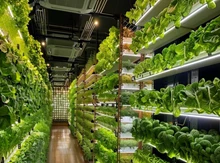
Digitization has been the year's watchword, and technology-driven solutions have slowly but steadily begun to change many aspects of the economy. The agriculture sector, which accounts for roughly 20% of India's GDP, was an exception until recently. Because of the rise of agri-tech, improved efficiency, connectivity, knowledge exchange, and a plethora of critical and supporting activities are now available at the touch of a button.
Drones, weather forecasters, automated machinery, AI-enabled planting and weeding, automated irrigation, and harvesting are just a few of the most recent examples of agricultural technology and Artificial Intelligence (AI). AI is also being used in soil testing and analysis, predicting the best environment for crop safety, and even creating social platforms for farmers to engage in.
Supply Chain Optimization
A broken supply chain has been a common issue in rural areas. Because the shelf life of fruits and vegetables is extremely short, agricultural stakeholders and farmers suffer the most, along with other sectors and their stakeholders. Farmers frequently lose money or make less money than they could because market prices vary dynamically across mandis. Among other things, technology can aid in the development of improved supply chain solutions, traceability, and price transparency across different mandis.
Precision Farming
By optimizing yield, farmers' revenue can be increased while their input costs are reduced to a greater extent. Many digital companies are developing devices and offering solutions to help farmers take preventative measures before an insect infestation occurs in order to save their crops. There are technologies for capturing data at the micro-level about moisture, soil conditions, weather, nutrients, and so on, allowing farmers to use only very specific soil fertilizers.
Credit & Loan Availability
Thirty percent of Indian farmers have little access to institutional lending. The remaining 70% rely on unsecured credit at exorbitantly high-interest rates. This is primarily due to a lack of farmer data, which includes transaction history, credit history, assets, earnings, and so on.
Farmers will be able to keep track of their transactions more easily once they begin to deal digitally, or at the very least begin to share their transaction activities digitally, allowing institutional lenders to assess their creditworthiness and make loans at normal interest rates.
Technological advancements have now impacted every industry. Agriculture is one of them, and it is a sector that is critical to the entire human life cycle, and we will see significant improvements in the coming years as a result of the use of digital tools and platforms.
As a result of agri-tech, the country's agriculture sector is set to undergo a revolution, with significant changes expected. Agriculture relies on technology, agricultural machinery, food and fertilizers, irrigation, and the market system, and AI will help farmers in all of these areas in the coming years. Agri-tech will be essential at every stage of the process, from seed planting in the field to crop harvesting and selling the finished product.











